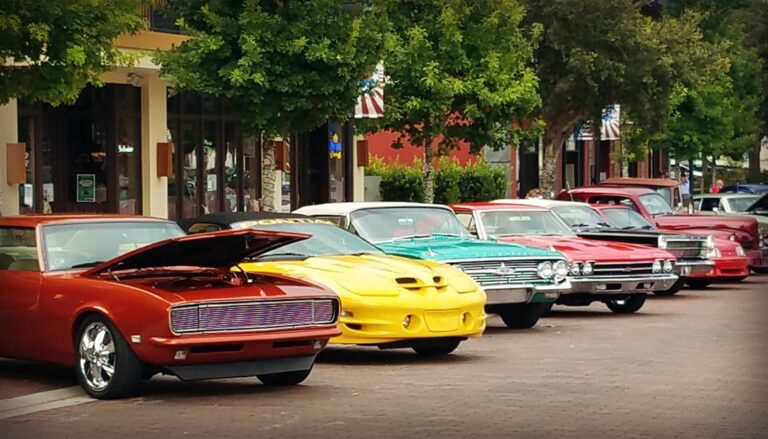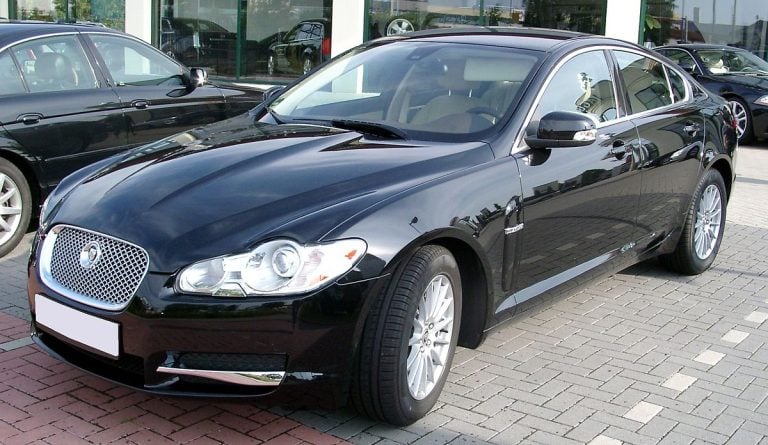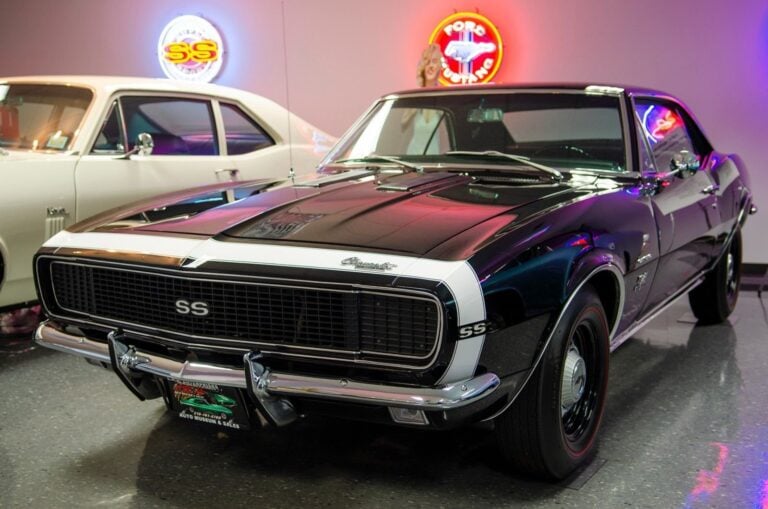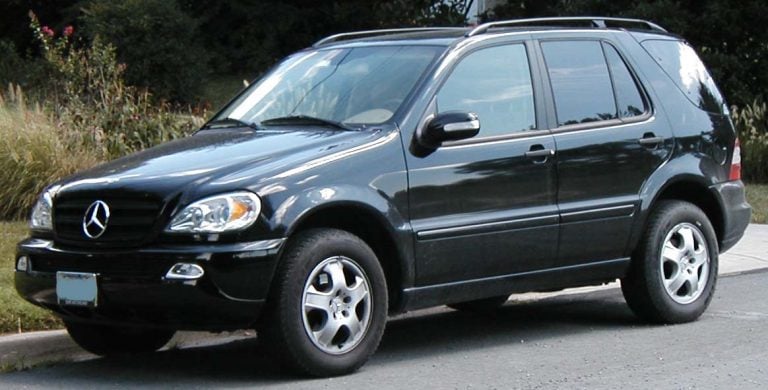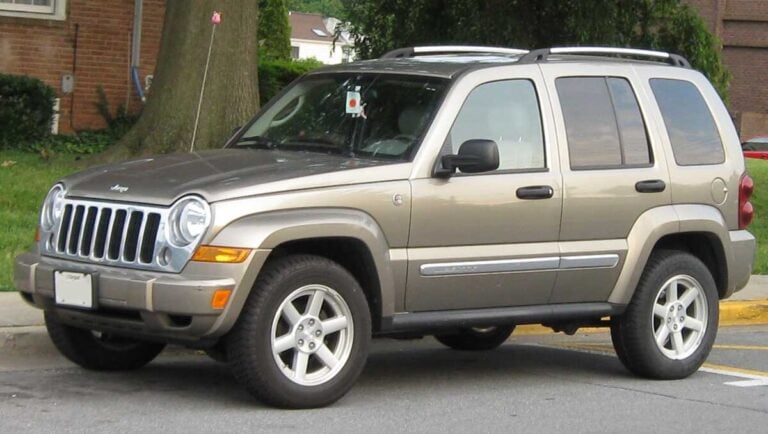The 30 Worst Sports Cars Ever Made: Automotive Disasters That Failed
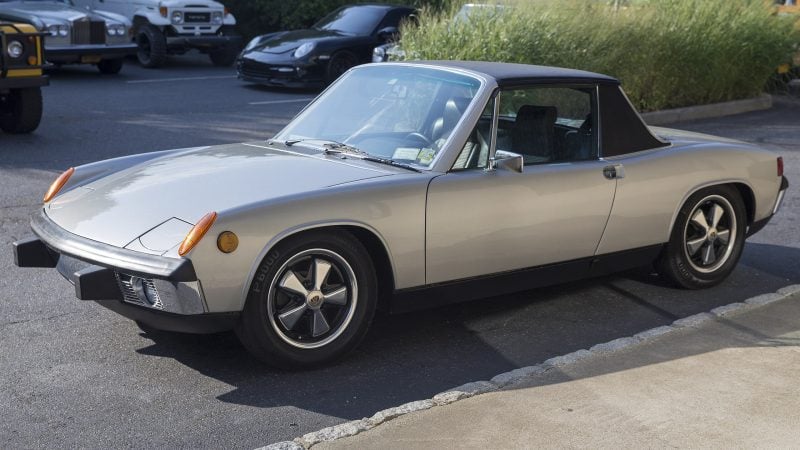
Sports cars represent the pinnacle of automotive performance and design, promising thrilling acceleration, precise handling, and striking aesthetics.
However, not every manufacturer has succeeded in delivering on these fundamental expectations. Some vehicles that were marketed as high-performance sports cars fell short due to underwhelming engines, questionable design choices, or significant reliability issues.
This comprehensive examination reveals how even prestigious automakers have produced sports cars that disappointed enthusiasts and failed to meet basic performance standards.
From iconic brands like Porsche and Ferrari to American muscle car manufacturers, the automotive industry has witnessed numerous examples of sports cars that looked promising but delivered subpar experiences.
These vehicles serve as important lessons about the factors that separate truly exceptional sports cars from costly disappointments.
Here are the 30 worst sports cars ever made:
1. Lotus Elite
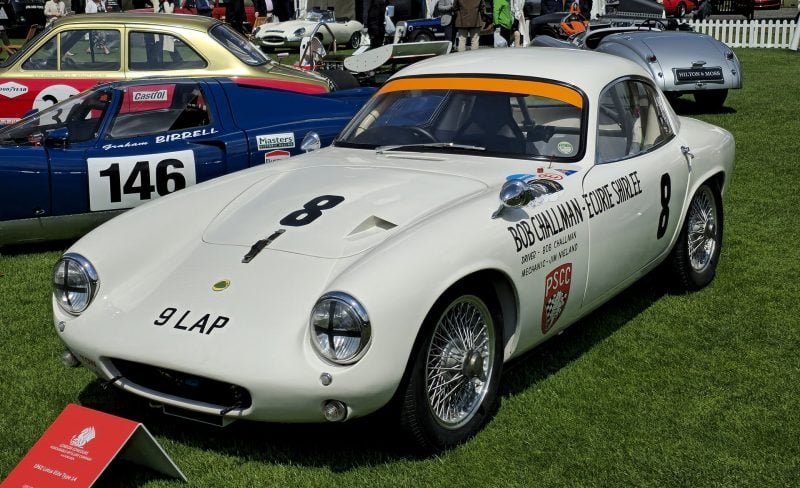
The Lotus Elite earned its place among the worst sports cars through fundamental design flaws. The car weighed only 1,100 pounds thanks to its fiberglass construction.
While the lightweight design made it competitive on racetracks, it created serious problems for everyday use. The fiberglass body was extremely fragile and prone to cracking under normal driving conditions.
Build quality was consistently poor across production models. The structural integrity issues made the Elite unreliable for daily driving despite its racing potential.
Colin Chapman designed the Elite with weight savings as the primary goal. However, this focus on lightness came at the expense of durability and practicality.
The Elite represented Lotus’s attempt at a more civilized sports car compared to their previous models. Unfortunately, the execution fell short of the ambitious concept, leaving owners with an impractical vehicle that couldn’t withstand regular use.
2. Porsche 914
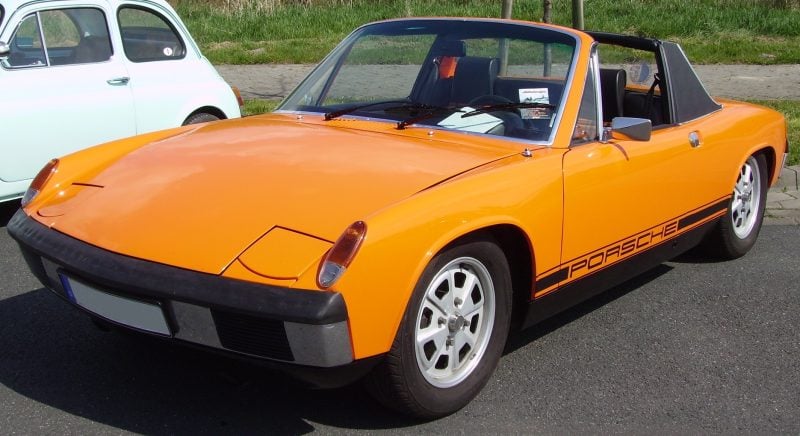
The Porsche 914 remains one of the most polarizing sports cars in automotive history. Introduced in 1970, this mid-engine roadster was a joint venture between Porsche and Volkswagen.
Critics widely dismissed the 914 for being underpowered and overpriced. The base model’s four-cylinder engine produced only 80 horsepower, making acceleration sluggish compared to competitors.
The 914’s appearance drew harsh criticism from Porsche purists. Its angular design looked nothing like traditional Porsches, leading many to question its authenticity as a true Porsche sports car.
Marketing missteps further damaged the 914’s reputation. The six-cylinder 914/6 cost nearly as much as the iconic 911T, making it a poor value proposition for buyers.
Despite selling well initially, the 914 suffered from reliability issues and poor build quality. These problems cemented its reputation as a disappointing entry in Porsche’s lineup.
3. Jaguar XJ220
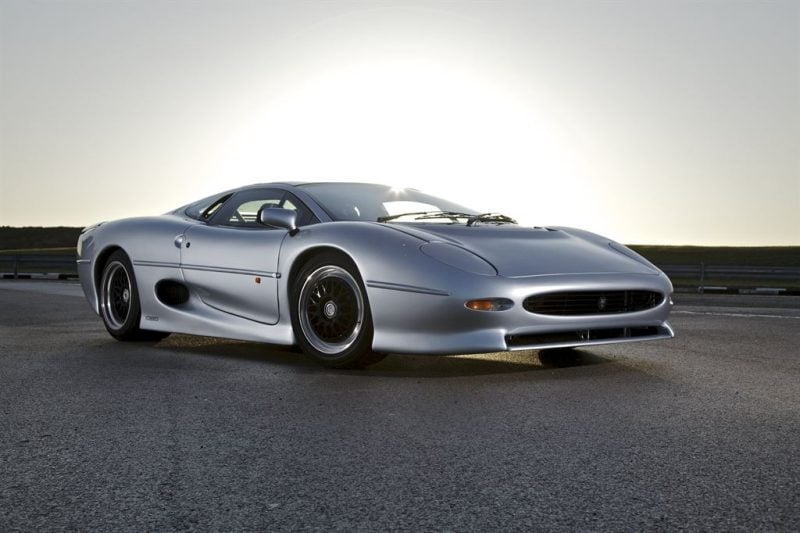
The Jaguar XJ220 represented one of automotive history’s greatest disappointments. Despite achieving a top speed of 217 mph and briefly holding the world’s fastest production car title, it failed spectacularly in execution.
Jaguar promised customers a four-wheel-drive V12 hypercar when taking deposits. Instead, buyers received a rear-wheel-drive vehicle powered by a twin-turbocharged V6 engine from a failed hot hatch project.
The XJ220 lacked power steering, making it difficult to maneuver compared to competitors. Its heavy build and rear-wheel-drive setup created clunky handling that felt unresponsive in tight corners.
Track-focused engineering made it unsuitable for road use. The car demanded frequent maintenance of its high-performance racing components and offered minimal luxury amenities despite its supercar price tag.
4. Ferrari 400 Superamerica (auto version)
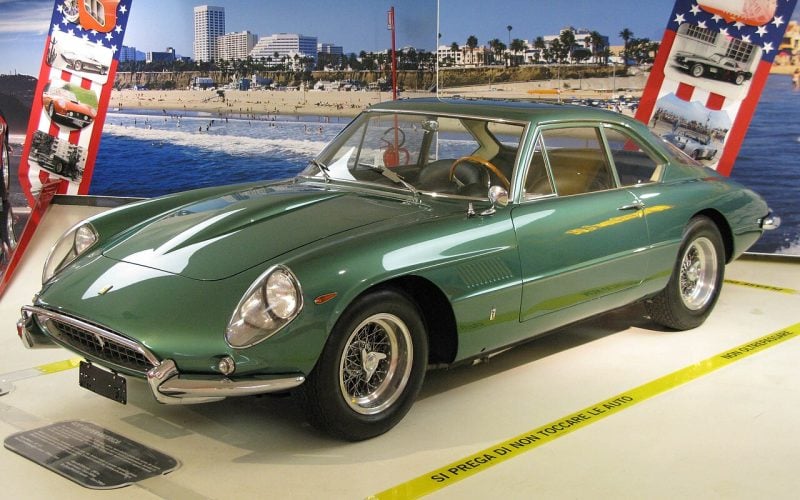
The Ferrari 400 marked a controversial chapter in Ferrari’s history as the brand’s first production car with an automatic transmission. Ferrari equipped this grand tourer with a General Motors three-speed automatic gearbox.
The transmission choice proved deeply unpopular among Ferrari purists. Many enthusiasts viewed the automatic option as contradicting Ferrari’s racing heritage and performance-focused identity.
Beyond the transmission controversy, the 400 suffered from awkward styling proportions. The rear section appeared particularly ungainly, disrupting the car’s overall visual balance.
Performance disappointed compared to other Ferrari models of the era. Despite housing Ferrari’s respected Colombo V12 engine, the 400 failed to deliver the excitement expected from the prancing horse badge.
The combination of uninspiring performance, questionable styling, and automatic transmission made the 400 one of Ferrari’s most criticized models.
5. Chevrolet Corvette C4 (early models)
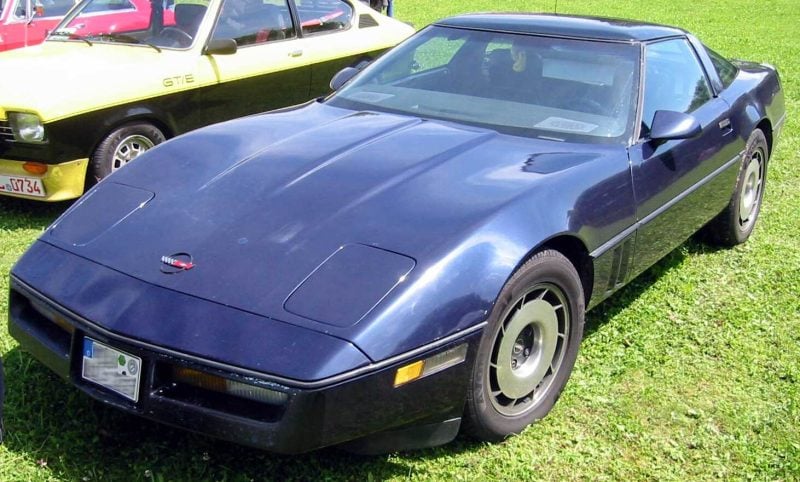
The C4 Corvette debuted in 1984 after GM skipped the entire 1983 model year due to development issues. This rocky start foreshadowed the problems that would plague early C4 models.
Early C4 Corvettes suffered from numerous reliability issues. The electronic systems frequently malfunctioned, causing dashboard displays and climate controls to fail unexpectedly.
Build quality was notably poor in the first few production years. Interior materials felt cheap and often cracked or warped prematurely.
The 1984 and 1985 models experienced significant transmission problems. The automatic transmission was prone to early failure, while the manual gearbox had synchronizer issues.
Fuel system failures became common complaints among early C4 owners. The ride quality was also criticized as unnecessarily harsh for a sports car of its caliber.
These early issues damaged the C4’s reputation, though later models in the 1990s resolved many of these concerns.
6. Fiat X1/9
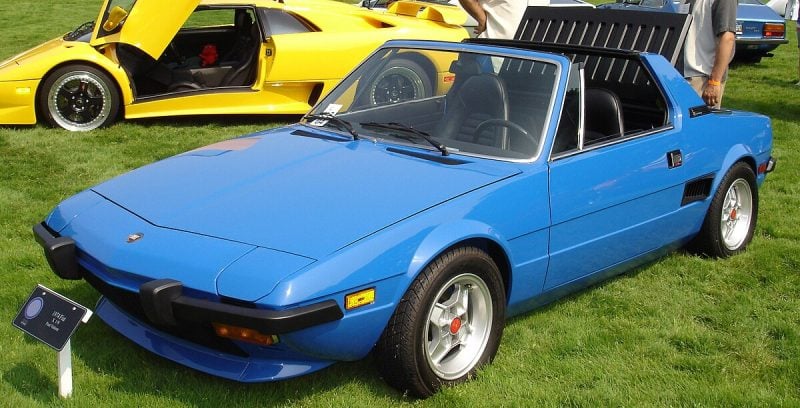
The Fiat X1/9 arrived as an ambitious mid-engine sports car in 1972. Bertone designed the wedge-shaped two-seater to compete with more expensive European sports cars.
The X1/9 suffered from underwhelming performance despite its exotic layout. It borrowed a 1.3-liter engine from the economy-focused Fiat 128, producing modest power output that failed to match its sporty appearance.
Build quality issues plagued the model throughout its production run. Rust problems were particularly severe, with many examples deteriorating rapidly in harsh climates.
The car’s handling was its strongest asset, but this couldn’t compensate for reliability concerns. Electrical problems and mechanical failures were common complaints among owners.
Production lasted until 1989, with Bertone taking over manufacturing from Fiat in 1982. Despite selling 160,000 units globally, the X1/9’s combination of poor reliability and weak performance earned it a spot among disappointing sports cars.
7. Dodge Stealth RT/TT (early models)
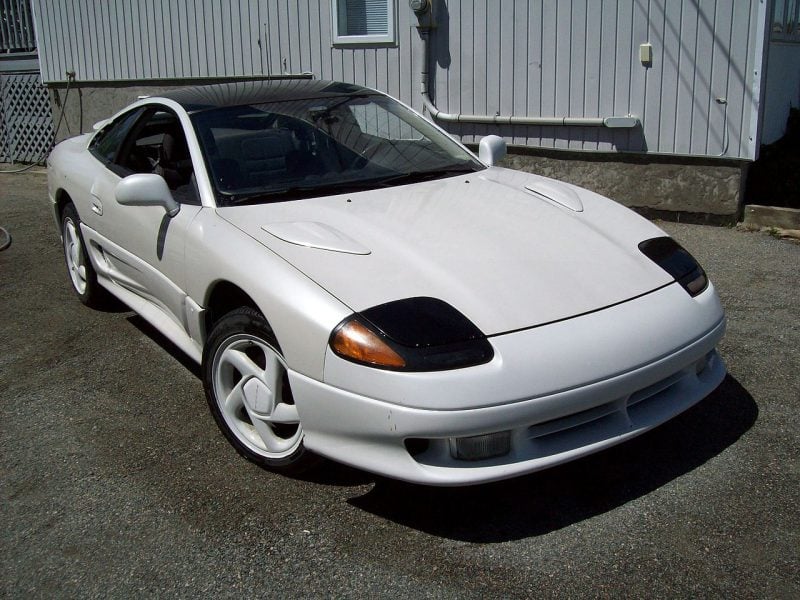
The Dodge Stealth RT/TT promised cutting-edge performance when it debuted in 1990. Despite its advanced all-wheel-drive system and twin-turbo V6 engine, early models suffered from significant reliability issues.
The sophisticated technology proved finicky and expensive to repair. Many dealership technicians lacked proper knowledge to service these complex systems effectively.
Early Stealth models experienced cramped interiors with poor visibility. The dashboard controls were difficult to read compared to competitors like the Nissan 300ZX.
Build quality inconsistencies plagued initial production runs. Electrical problems and turbocharger failures became common complaints among early adopters.
The car’s advanced features often malfunctioned, leaving owners with costly repair bills. While later models addressed some issues, early RT/TT variants earned a reputation for unreliability that overshadowed their impressive performance capabilities.
8. Mitsubishi Eclipse GSX (first generation)
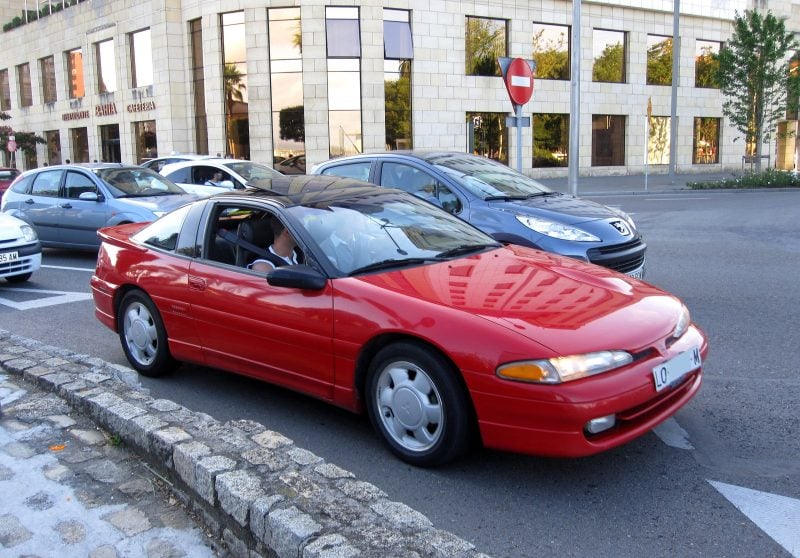
The first-generation Eclipse GSX arrived with high expectations as Mitsubishi’s turbocharged all-wheel-drive sports coupe. Despite initial enthusiasm, the model suffered from significant reliability issues that plagued owners.
The 4G63T turbocharged engine was prone to head gasket failures and oil leaks. These problems typically emerged around 60,000 miles, leading to expensive repairs that often exceeded the car’s value.
Transmission problems were equally troublesome. The all-wheel-drive system experienced frequent transfer case failures and clutch issues that left drivers stranded.
Build quality remained inconsistent throughout production. Interior trim pieces broke easily, electrical systems failed regularly, and rust developed prematurely around wheel wells and door frames.
While the Eclipse GSX showed promise on paper with decent performance figures, its chronic mechanical problems and poor long-term reliability earned it a reputation as a maintenance nightmare among sports car buyers.
9. Pontiac Fiero GT
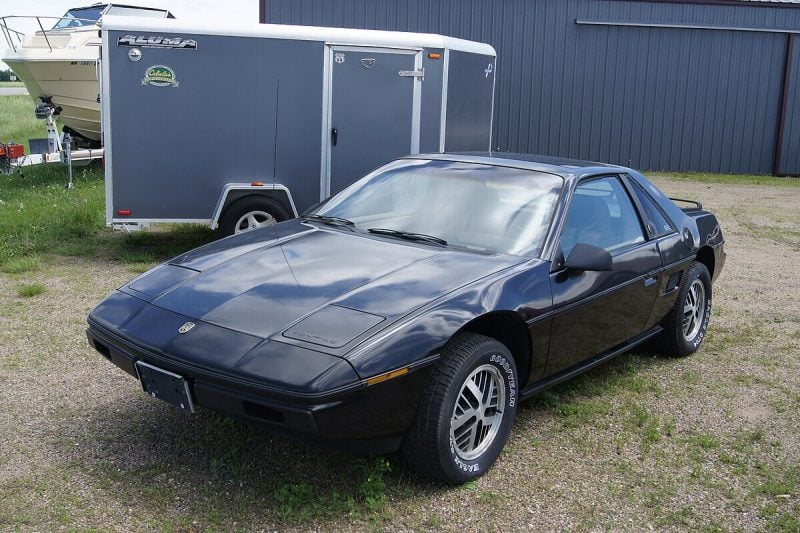
The Pontiac Fiero GT debuted in 1984 as America’s first mass-produced mid-engine sports car. Despite its promising concept, the vehicle suffered from significant engineering flaws that earned it a spot among automotive disappointments.
The 2.5-liter inline-four engine produced only 92 horsepower, making it severely underpowered for sports car standards. This weak performance couldn’t match the car’s aggressive styling and mid-engine promise.
Early models experienced dangerous reliability issues, including engine fires caused by faulty components. Poor build quality plagued the vehicle throughout its production run from 1984 to 1988.
Pontiac issued 403 service bulletins addressing various problems with the Fiero. The combination of unreliable performance, safety concerns, and quality control issues damaged the car’s reputation permanently.
General Motors discontinued the Fiero after four years due to poor sales and mounting costs from constant fixes.
10. Ford Mustang II
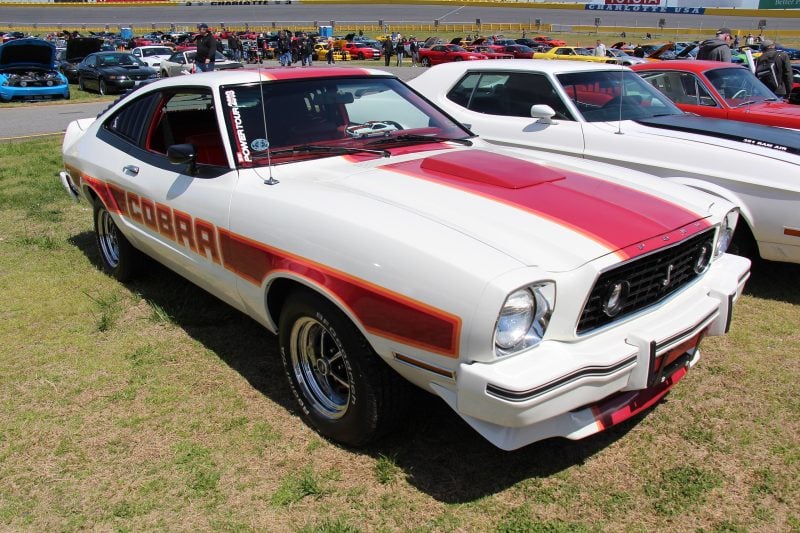
The Ford Mustang II betrayed everything the original Mustang represented. Built from 1974 to 1978, this second-generation model abandoned the performance heritage that made its predecessor famous.
Ford based the Mustang II on the compact Pinto platform. This decision fundamentally compromised the car’s sporting credentials from the start.
The base four-cylinder engine produced just 83 horsepower after mandatory catalytic converter installation. The optional V6 managed only 100 horsepower, hardly impressive for a supposed sports car.
Ford eventually added a V8 option in 1975. The 302-cubic-inch engine delivered a meager 129 horsepower through a restrictive two-barrel carburetor setup.
The lightweight platform couldn’t properly handle even this modest V8 power. The car’s structure proved fragile and unsuitable for performance driving.
The 1978 King Cobra represented the model’s final attempt at performance credibility. Despite aggressive styling, it remained fundamentally flawed underneath.
11. DeLorean DMC-12
The DeLorean DMC-12 stands as one of automotive history’s biggest disappointments. Despite its futuristic stainless steel body and iconic gullwing doors, the car failed to deliver on performance expectations.
John DeLorean’s ambitious sports car suffered from severe power deficiencies. The 130-horsepower Peugeot V6 engine produced underwhelming acceleration, with models taking over 10 seconds to reach 60 mph.
Production peaked in 1981-1982 with 7,452 units sold, but sales plummeted dramatically afterward. Only 1,844 units were produced in the final years of 1983-1984 before the company collapsed.
The DMC-12’s poor sales performance stemmed from its combination of high price and low power output. While other sports cars survived the early 1980s recession, the DeLorean’s weak engine made it uncompetitive in the market.
12. Nissan 300ZX (Z31)
The Z31 300ZX produced from 1983 to 1989 stands as the black sheep of Nissan’s Z family. Despite being the highest-volume Z-car ever sold, it earned criticism from enthusiasts and automotive publications.
The Z31 suffered from a fundamental identity crisis. It lacked the focused sports car DNA that made earlier Z-cars legendary.
Performance was underwhelming across the lineup. Even the turbocharged models delivered disappointing acceleration and handling compared to contemporary sports cars.
The digital dashboard and heavy electronic systems added complexity without meaningful benefit. These features frequently malfunctioned and were expensive to repair.
Weight gain plagued the Z31 platform. The car grew significantly heavier than its predecessors, compromising the nimble character that defined the Z lineage.
Build quality issues were common. Owners frequently reported electrical problems, turbo failures, and interior component breakdowns that damaged the car’s reputation permanently.
13. Saab Sonett III
The Saab Sonett III represented Sweden’s attempt at creating an affordable sports car between 1970 and 1974. Built on a modified Saab 95 chassis with a fiberglass body, it promised European sports car excitement at a reasonable price.
The reality fell short of expectations. The front-wheel-drive layout compromised handling dynamics compared to traditional rear-wheel-drive sports cars of the era.
Power came from a Ford V4 engine that produced modest output. Acceleration and top speed figures disappointed enthusiasts expecting genuine sports car performance.
The quirky styling divided opinions. While some appreciated its unique Scandinavian design language, others found it awkward and ungainly compared to sleek Italian or British alternatives.
Build quality issues plagued early examples. The fiberglass construction, while rust-resistant, suffered from panel gaps and structural flex that undermined the driving experience.
Despite Saab’s engineering reputation, the Sonett III struggled to find its audience in competitive sports car markets.
14. Maserati Biturbo
The Maserati Biturbo destroyed the Italian manufacturer’s reputation during the late 1980s. This entry-level luxury sports coupe was meant to make Maserati ownership more accessible to buyers.
The car featured a front-engine, rear-wheel-drive layout with a twin-turbocharged V6 engine. Despite the promising mechanical setup, the Biturbo suffered from constant reliability problems.
Owners experienced frequent mechanical breakdowns and persistent electrical failures. Engine problems plagued the model throughout its production run, leaving many buyers stranded.
The 222 coupe started the Biturbo lineup, followed by 420 and 430 sedan variants. All models shared the same problematic foundation that made ownership expensive and frustrating.
While the Biturbo looked sharp and offered engaging driving dynamics, its reputation for unreliability overshadowed any positive qualities. The car became synonymous with disappointment rather than Italian luxury.
15. Renault Alpine GTA
The Renault Alpine GTA promised French sports car excellence when it debuted in 1984. The sleek coupe featured distinctive angular styling and aerodynamic design elements that looked the part.
However, the GTA’s performance failed to match its appearance. The 2.5-liter V6 engine produced underwhelming power output that disappointed driving enthusiasts.
The complicated Solex carburetor system created significant reliability problems. This finicky setup required constant adjustment of vacuum pipes and fuel delivery components to run smoothly.
Owners frequently encountered carburetor issues that affected drivability. The system’s complexity made repairs expensive and time-consuming for mechanics unfamiliar with the unit.
Build quality suffered from typical French automotive reliability concerns of the era. Various electrical and mechanical problems plagued the model throughout its production run until 1995.
The Alpine GTA looked like a proper sports car but delivered lackluster performance and frustrating ownership experiences.
16. BMW Z3 1.8L (base engine)
The BMW Z3’s entry-level 1.8-liter four-cylinder engine severely undermines what should be an engaging sports car experience. This powerplant produces just 140 horsepower, leaving the Z3 feeling sluggish and underpowered compared to competitors.
The 1.8L variant struggles to deliver the performance expectations that come with BMW’s sports car badge. Acceleration feels labored, particularly when compared to rivals like the Mazda Miata or Honda S2000.
BMW equipped the Z3 with various engine options ranging from the 1.9-liter four-cylinder to more powerful inline-six variants. The base 1.8L represents the weakest link in this lineup.
The engine’s lack of torque becomes particularly noticeable during highway merging and spirited driving situations. While the Z3’s chassis and handling characteristics show promise, the underpowered base engine fails to complement these strengths effectively.
17. Toyota MR2 AW11 (turbo versions)
The first-generation Toyota MR2 received a supercharged variant during its final production years. This forced induction addition fundamentally altered the car’s balanced character that made the naturally aspirated version appealing.
The supercharged AW11 suffered from significant turbo lag that disrupted the smooth power delivery. The added complexity of the forced induction system created reliability concerns that plagued owners.
Weight distribution became compromised with the supercharger installation. The mid-engine layout’s inherent balance was disturbed, leading to unpredictable handling characteristics during aggressive driving.
Heat management proved problematic in the compact engine bay. The supercharger generated excessive temperatures that stressed other components and reduced overall durability.
The power increase came at the expense of the car’s lightweight philosophy. Additional hardware made the vehicle heavier and less nimble than its naturally aspirated counterpart, defeating much of the original design’s purpose.
18. Alfa Romeo Spider (1980s)
The 1980s Alfa Romeo Spider represents a low point for the iconic Italian sports car. During this decade, the Spider suffered from significant quality control issues and reliability problems that plagued owners.
Autocar magazine included the Alfa Romeo Spider among the worst cars of the 2000s decade. The automotive press frequently criticized these models for their numerous mechanical failures and electrical problems.
The 1980s Spider models experienced engine troubles, transmission issues, and rust problems that were expensive to repair. Many owners found themselves facing repair costs that exceeded the vehicle’s actual value.
Poor maintenance procedures and complex Italian engineering made routine servicing difficult for most mechanics. The combination of unreliable components and high maintenance costs gave the Spider a reputation as a troublesome ownership experience during this era.
Despite its elegant styling, the 1980s Spider’s mechanical shortcomings overshadowed its visual appeal.
19. Volkswagen Scirocco (Mk1)
The Volkswagen Scirocco Mk1 launched in 1974 as VW’s attempt at an affordable sports coupe. The car featured angular styling that looked promising on paper.
However, the Scirocco suffered from significant performance limitations. Its base 1.5-liter engine produced just 70 horsepower, making acceleration disappointingly slow for a sports car.
Build quality issues plagued early models. Rust problems were common, particularly around wheel wells and door frames.
The handling felt disconnected and imprecise compared to true sports cars of the era. The steering lacked feedback, making spirited driving less engaging than drivers expected.
Interior quality was basic even by 1970s standards. Cheap plastics and flimsy switchgear dominated the cabin.
While some racing versions achieved success in motorsports, the street versions failed to deliver genuine sports car excitement. The Scirocco felt more like an economy car with sporty styling than a legitimate performance machine.
20. Chevrolet Camaro (third generation)
The third-generation Camaro arrived in 1982 and quickly became one of the most disappointing iterations of this iconic nameplate. Production ran through 1992, spanning an entire decade of mediocrity.
This generation suffered from significant performance deficiencies compared to its predecessors. The available engines lacked the power and character that made earlier Camaros legendary among enthusiasts.
Build quality issues plagued these models throughout their production run. Common problems included electrical failures, transmission troubles, and interior component breakdowns that frustrated owners.
The styling, while modern for its time, failed to capture the aggressive muscular appearance of previous generations. Many considered the design bland and uninspiring compared to the bold lines of earlier models.
Performance numbers were particularly underwhelming during the early years of production. Even the higher-trim models struggled to deliver the driving excitement expected from a sports car bearing the Camaro name.
21. Ford Capri (North American version)
The Ford Capri debuted in North America in 1991 as Mercury’s attempt to capture younger buyers. This front-wheel-drive convertible shared its platform with the Mazda 323 but failed to deliver genuine sports car performance.
The base 1.6-liter engine produced only 100 horsepower. Even the optional turbocharged version managed just 132 horsepower, inadequate for a vehicle marketed as a sporty convertible.
Build quality issues plagued the Capri throughout its brief production run. Owners frequently reported electrical problems, premature convertible top failures, and transmission issues.
The styling appeared dated upon release, resembling economy cars more than sports vehicles. Interior materials felt cheap and poorly assembled compared to competitors.
Sales figures reflected consumer disappointment. Ford discontinued the North American Capri after only 1994, marking one of the shortest production runs for any modern Ford sports car.
22. Mazda RX-7 (second generation)
The second-generation RX-7, produced from 1985 to 1992, marked a significant departure from Mazda’s lightweight sports car philosophy. The FC generation became substantially heavier and more focused on grand touring rather than pure performance.
This weight gain followed the same problematic trend as other Japanese sports cars of the era. The Toyota Supra and Nissan 300ZX also suffered from similar bloating during this period.
The rotary engine’s inherent reliability issues became more pronounced in the FC generation. Apex seal failures and oil consumption problems plagued owners throughout the model’s production run.
While the car maintained decent handling characteristics, it lost much of the nimble feel that made the original RX-7 special. The added weight compromised the car’s balance and responsiveness on twisty roads.
23. Cadillac Allanté
The Cadillac Allanté represented General Motors’ ambitious attempt to compete with the Mercedes-Benz SL in the luxury roadster market from 1987 to 1993. This two-seat convertible featured bodywork designed and built by the renowned Italian firm Pininfarina.
Despite its striking appearance and premium positioning, the Allanté failed to deliver the performance expected from a sports car. The vehicle suffered from reliability issues and lackluster driving dynamics that disappointed buyers seeking genuine sports car thrills.
Cadillac’s first two-seat roadster since 1941 looked expensive and dramatic. However, the execution fell short of the ambitious concept.
The Allanté’s high price point and questionable build quality made it one of Cadillac’s most expensive failures. Production ended after just seven years, cementing its reputation as a missed opportunity in the luxury sports car segment.
24. Mercedes-Benz SLK 230 Kompressor
The Mercedes-Benz SLK 230 Kompressor appeared promising with its retractable hardtop and compact roadster design. However, this model suffered from numerous reliability problems that diminished its sports car credentials.
The supercharged 2.3-liter engine produced modest power output that failed to deliver exciting performance. Many owners reported mechanical issues that affected the driving experience.
Interior accessories presented the most significant complaint category among owners. The 2000 model year recorded 127 reported problems and defects from SLK230 owners.
Build quality inconsistencies plagued various model years during its production run from 1996 to 2004. These reliability concerns made the SLK 230 a questionable choice for sports car enthusiasts seeking dependable performance.
The vehicle’s attempt to attract younger Mercedes buyers fell short due to these persistent mechanical and quality issues that overshadowed its innovative hardtop design.
25. Peugeot 505 Turbo
The Peugeot 505 Turbo struggled to establish itself as a legitimate sports car in the American market during the 1980s. Despite its turbocharged engine, the car suffered from chronic reliability issues that plagued owners.
Parts availability became a major concern for 505 Turbo owners. The complex French engineering made repairs expensive and time-consuming when components failed.
The car’s frequent mechanical problems overshadowed any performance benefits the turbo system provided. American consumers found the 505 Turbo to be an unreliable choice compared to Japanese and German alternatives.
Peugeot’s limited dealer network in the United States compounded the ownership experience problems. Service support was inconsistent across different regions.
The 505 Turbo’s reputation for poor reliability ultimately contributed to Peugeot’s withdrawal from the American market. The car failed to deliver the dependable performance expected from a sports car.
26. Lancia Beta Montecarlo
The Lancia Beta Montecarlo arrived in 1975 as a mid-engine sports car that promised more than it delivered. Only 2,577 examples were produced during its production run.
The car suffered from significant reliability issues that plagued the entire Beta lineup. Rust problems were particularly severe, earning negative attention from automotive press.
Performance failed to match the car’s aggressive styling. The Montecarlo looked like a supercar but lacked the mechanical sophistication to back up its appearance.
Build quality was inconsistent throughout production. Many components were prone to premature failure, making ownership expensive and frustrating.
In the American market, the car was renamed Scorpion due to trademark conflicts with Chevrolet’s Monte Carlo. The name change couldn’t fix the underlying mechanical problems that made this Lancia a disappointing sports car experience.
27. Triumph TR7
The Triumph TR7 arrived in 1974 as a radical departure from traditional British sports car design. Its wedge-shaped body replaced the classic curves that defined the TR series.
Triumph marketed the car with the slogan “The shape of things to come.” However, this futuristic design alienated many enthusiasts who preferred conventional styling.
The TR7 suffered from significant reliability problems during its production run from 1975 to 1981. Quality control issues plagued the model throughout its manufacturing at multiple facilities.
Performance disappointed compared to its predecessors. The four-cylinder engine lacked the power many expected from a sports car bearing the TR badge.
Production ended in 1981, marking the conclusion of Triumph’s sports car legacy. The TR7 frequently appears on lists of automotive failures, particularly among American critics who found the car especially problematic.
28. Buick Reatta
The Buick Reatta represented a bold departure for the traditionally conservative brand when it debuted in 1988. This two-seat coupe featured hand-built construction and futuristic technology that seemed impressive on paper.
Despite its sleek design and advanced features, the Reatta failed to deliver as a true sports car. The vehicle lacked the performance credentials expected from a sports car, with underwhelming acceleration and handling characteristics.
Buick positioned the Reatta at a premium price point that made it expensive for what buyers received. The car struggled with identity issues, failing to establish itself as either a luxury cruiser or a genuine performance vehicle.
Production lasted only four years, ending in 1991. The Reatta’s combination of high cost, modest performance, and unclear market positioning contributed to its commercial failure and cemented its place among disappointing sports cars.
29. Honda CR-X del Sol VTEC (base models)
The Honda CR-X del Sol arrived in 1992 as the successor to the beloved CR-X. Honda marketed this two-seater targa-top as their answer to the Mazda Miata.
The base model’s 1.5-liter single-cam engine produced just 102 horsepower. This underwhelming output made acceleration sluggish for a supposed sports car.
The Del Sol’s weight distribution suffered from its removable roof mechanism. The complex targa top system added unnecessary pounds while compromising structural rigidity.
Build quality issues plagued many examples. Electrical problems frequently affected the motorized rear window and various interior components.
The car’s styling suggested mid-engine performance but delivered front-wheel-drive mediocrity. Its sporty appearance promised more excitement than the base engine could deliver, leaving drivers disappointed with lackluster performance that failed to match its aggressive looks.
30. Lotus Esprit Turbo (late 1980s)
The late 1980s Lotus Esprit Turbo promised exotic car thrills but delivered significant reliability headaches. The turbocharged 2.2-liter four-cylinder engine produced around 215 horsepower, respectable for its era.
However, the turbo system proved problematic in daily use. Heat management issues plagued the engine bay, leading to frequent overheating problems. The turbocharger itself required regular maintenance that many owners couldn’t afford.
Electrical gremlins haunted these cars consistently. Window motors failed regularly, and the air conditioning system rarely worked properly. Interior trim pieces broke easily and proved expensive to replace.
The fiberglass body panels didn’t age well either. Paint adhesion problems were common, and minor accidents often resulted in costly bodywork. Build quality remained inconsistent throughout production.
Despite its striking wedge design and decent performance, the late 1980s Esprit Turbo earned its reputation as a maintenance nightmare that frustrated many owners.
Common Design Flaws in Sports Cars
Sports cars fail when manufacturers compromise on critical engineering decisions that affect speed, acceleration, and handling capabilities. Poor construction materials and rushed production timelines create reliability problems that plague owners for years.
Performance Limitations
Engine underpowerment represents the most damaging flaw in sports car design. The Porsche 914 suffered from a weak base engine that produced insufficient horsepower for its sports car positioning.
Many manufacturers install engines that cannot deliver competitive 0-60 mph times. Sports cars with acceleration times exceeding 8 seconds fail to meet basic performance expectations.
Inadequate cooling systems cause engine overheating during spirited driving. Faulty coolant lines and poorly designed radiator placement lead to thermal management failures.
Transmission problems plague numerous sports cars through poor gear ratios and weak clutch systems. Manual transmissions with vague shifter feel destroy the driving experience that enthusiasts expect.
Suspension tuning errors create handling characteristics that feel disconnected from driver inputs. Cars with excessive body roll or unpredictable cornering behavior compromise safety and performance.
Build Quality Issues
Electrical system failures create widespread reliability problems in sports cars. Faulty wiring harnesses cause random component malfunctions that leave drivers stranded.
Manufacturers often use substandard materials to meet cost targets. Cheap plastics in interior components crack and fade quickly under normal use conditions.
Structural weaknesses emerge when automakers reduce chassis rigidity to save weight. These compromises lead to body flex that affects handling precision and long-term durability.
Poor assembly tolerances create panel gaps and alignment issues. Sports cars with inconsistent build quality develop rattles and squeaks that worsen over time.
Paint defects and corrosion problems tarnish the visual appeal of sports cars. Thin paint applications and inadequate rust protection cause premature deterioration.
Aesthetic Missteps
Proportional imbalances destroy the visual harmony that defines attractive sports car design. Cars with oversized front overhangs or awkward rear deck proportions appear ungainly.
Manufacturers sometimes adopt styling trends that age poorly. Excessive body cladding and dated graphics make sports cars look obsolete within few years of production.
Interior design failures include poorly positioned controls and uncomfortable seating positions. Sports cars with cramped cabins and cheap-feeling materials disappoint buyers who expect premium experiences.
Lighting design errors create safety concerns and aesthetic problems. Headlight arrangements that provide inadequate illumination or taillights with poor visibility compromise both function and appearance.
Color and trim combinations can make otherwise acceptable designs appear cheap or garish. Poor material choices for exterior accents create visual discord that detracts from overall appeal.
Factors That Define a Poor Sports Car
A sports car earns its place among the worst when it fails to deliver in three critical areas: subpar handling that contradicts performance expectations, persistent reliability issues that drain owner finances, and negative market reception that damages long-term value.
Handling and Driving Dynamics
Poor handling separates disappointing sports cars from true performance vehicles. Cars with inadequate suspension systems exhibit excessive body roll during cornering. This creates an unstable driving experience that undermines confidence.
Critical handling deficiencies include:
- Vague steering feedback that disconnects drivers from the road
- Braking systems that fade under performance driving
- Weight distribution problems causing understeer or snap oversteer
Performance numbers reveal handling inadequacies clearly. Sports cars with 0-60 times exceeding 8 seconds fail to meet basic acceleration expectations. Top speeds below 120 mph indicate fundamental engineering limitations.
Suspension design directly impacts driving dynamics. Cars with poorly tuned springs and dampers struggle with both comfort and performance. The vehicle becomes uncomfortable on normal roads while failing to provide adequate control during spirited driving.
Reliability and Maintenance Challenges
Chronic reliability problems transform sports car ownership into financial nightmares. Frequent breakdowns destroy the driving experience owners expect from performance vehicles. High repair costs compound these frustrations.
Common reliability issues include:
- Engine problems requiring expensive rebuilds
- Electrical system failures affecting critical components
- Transmission failures in both manual and automatic variants
Build quality determines long-term ownership satisfaction. Cars with poor assembly standards develop rattles, leaks, and component failures within the first few years. These problems worsen over time without proper engineering support.
Maintenance costs often exceed reasonable expectations. Some sports cars require specialized tools and dealer-only service procedures. Parts availability becomes problematic as manufacturers discontinue support for unsuccessful models.
Market Reception and Legacy
Market rejection defines truly unsuccessful sports cars through measurable metrics. Poor sales figures indicate consumer dissatisfaction with the product. Critical reviews from automotive journalists highlight specific shortcomings that influence buyer decisions.
Market failure indicators:
- Sales numbers significantly below manufacturer projections
- Rapid depreciation exceeding normal sports car rates
- Short production runs due to consumer disinterest
Styling controversies contribute to market rejection. Cars with polarizing designs fail to attract sufficient buyers in competitive segments. Proportions that appear awkward or derivative hurt sales performance.
Long-term reputation affects collectibility and enthusiasm. Sports cars remembered negatively rarely develop strong collector followings. These vehicles become cautionary tales rather than celebrated examples of automotive achievement.

